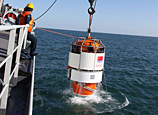
BEIJING, Dec. 12 (Xinhua) -- A white-collar worker surnamed Shi is among millions of Chinese eagerly awaiting the launch of a high-speed railway linking the cities of Beijing and Wuhan.
"The new line will cut travel time from Beijing to Shijiazhuang, my hometown, to just 50 minutes from two-and-a-half hours," Shi said.
The railway, which is expected to start operation at the end of December, is part of broader government efforts to build a high-speed passenger rail network by 2015 to tackle gridlock and drive economic growth.
Government-led investment has proven to be an effective way to bolster the economy amid slowdowns. In 2009, when the financial crisis raged, the government succeeded in prompting instant and rapid economic growth by introducing massive investment projects.
"The country intends to boost economic growth by stepping up investment amid the current slowdown and the rail sector is worth investing in," said Zhao Jian, an economics professor at Peking University.
Recent data from the Ministry of Railways supports Zhao's view. During the first 11 months of the year, fixed-asset investment in railways, including railway infrastructure investment and train purchases, totaled 506.97 billion yuan (81.1 billion U.S. dollars), up 3.1 percent year on year, the ministry said Tuesday.















 Snow hits capital of China, flights delayed
Snow hits capital of China, flights delayed


![]()
